In February 2020, my granny passed away. She was in her late 80s, the anchor to our ship, and the last remaining grandparent in my family. It was only then that I realised it was too late to ask all the questions I should have asked.
It had always been my intention to save up enough money to buy a good camera and to use it to record the words of wisdom from the last remaining elder in our family. Unfortunately, illness forced my granny into hospital, and like so many others, she never returned.
Later that year I spoke to family members about their lives, and their memories of their parents and grandparents. It was a way for me to relieve the guilt of not being a better grandson. It felt like a way for me to make amends. I started to catalogue some of their stories; I used some of them as the foundation of my first play, The Dead House, which premiered as a work in progress at last year's Dublin Theatre Festival and centres on Patrick, a man who returns home to his grandfather's wake in the west of Ireland, after living in self-imposed exile for 10 years.
In writing this play I realised that in Ireland, Travellers and non-Travellers share the same respect for the dead and a wake is a quintessential part of the last farewell. Saying farewell to a family member is tough enough, but for some of us, saying goodbye to an elder also marks the loss of our culture and the last remaining ties to a bygone era.
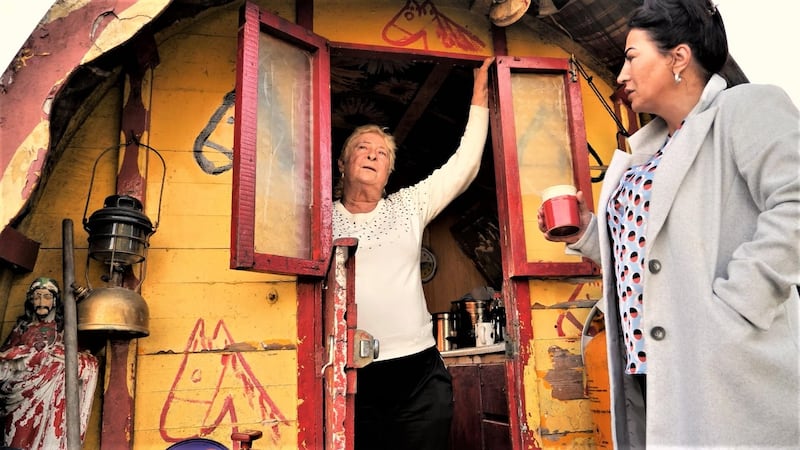
So, late last year, I decided to gather the stories of our elders, and while it might be too late to record my own granny, it is not too late to record other grandparents, and with that, to preserve the oral history of our culture and of an old Ireland.
Mags Casey is a Traveller activist from Limerick. Together, we set out to make short videos of Traveller elders across the country. The aim is simple: record as many of these older people and their stories as possible. Sadly, since Travellers die 10 to 15 years earlier than our non-Traveller neighbours, this project is a race against the clock.
'Even my family now, the grandchildren, a lot of them live in houses but they all still love to come visit and they all love being in the wagon'
The hope is to build an archive of these stories for future generations. Older Travellers are now the only people alive who know what it was like to travel the roads of Ireland in a wagon, or to tell us what life was like living in a tent.
On the first day of filming a video as part of Traveller pride week 2021, we spoke to Nelly Reilly. Nelly and her husband, Willie, both still live in a traditional barrel-top wagon, and to our knowledge they are the last remaining Travellers to do so on a permanent basis. They have never lived in a house.
They live on an unofficial site in Cashel, where there are a few contemporary caravans and two traditional wagons, although the old wooden wheels had been replaced with modern tyres. The Reillys' wagon is painted with bright colours and has a green canvas roof. Nelly and her husband Willie are both in their 70s and they tell us that they would never change the place that they call home.
Nelly says the old wagons were the best and that they didn’t “sweat in the winter” (they don’t suffer as much from condensation as some of the newer caravans do). Nelly also told of how people in the past were far more likely to visit and socialise with each other before they moved into houses.
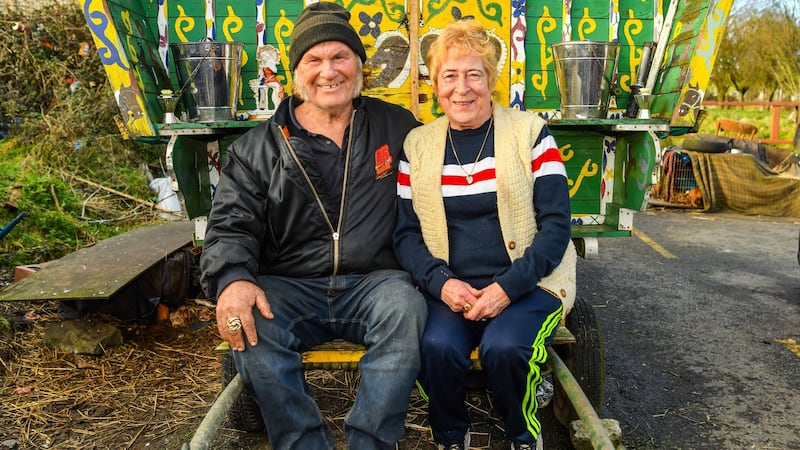
Having first met over 50 years ago, Willie and Nelly moved into their wagon and reared 12 children. She tells us that some of the children slept under the bunk (mainly the girls), while the boys slept in tents outside as they grew older. The combination of tents and wagons was commonplace for Travellers in the past and going back even further it was the tarpaulin tents that much of the Traveller community called a home.
As we sat and listened to the low hum of the cast-iron kettle rattle away on top of the stove inside the wagon, Mags asked Nelly what the wagon means to her. Standing on the hand-carved steps leading into her home, Nelly responded: “The wagon means a lot to me because I was reared in one. It means even more to me because my father used to build them, so it is kind of a traditional thing for us. We love the wagons.”
The wagons are more than just a home, they’re a connection to her culture. “Even my family now, the grandchildren, a lot of them live in houses but they all still love to come visit and they all love being in the wagon,” Nelly said.
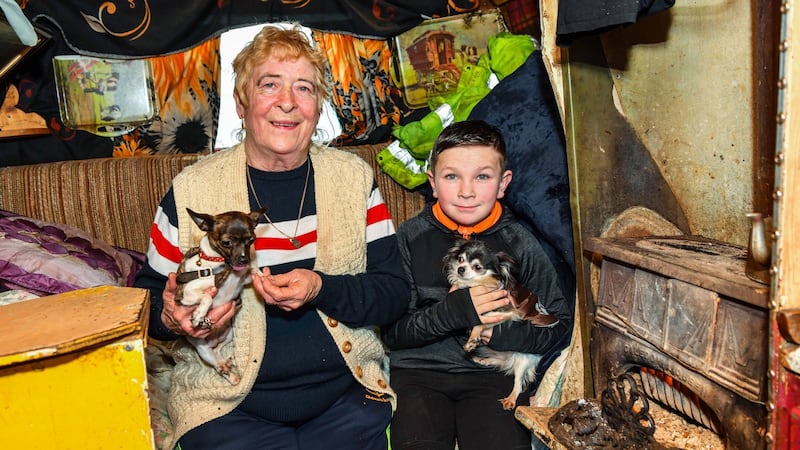
The fact that the only traditional wagons travelling the roads of Ireland today are owned and operated by tourist companies and non-Travellers makes Nelly “feel very bad. It’s like they are taking our culture away from us, it makes me very sad.”
Mags Casey adds that she finds it “despicable” that for a Traveller to experience their traditional way of life or to see their heritage, they would either have to pay to enter a museum or pay a tourist company. Casey questions this trend; she says the trespassing Bill signed into law in 2002 made it harder for Travellers to use wagons and they were moved on from commonage more frequently. Now tourist wagons freely use the roads whereas elders are confined to sites and unofficial lay-bys.
How can a tourist industry operate from the angle of cultural appropriation while the culture that has been misappropriated has been essentially criminalised? To our community, it seems that it is okay to play Traveller, but not live as a Traveller.
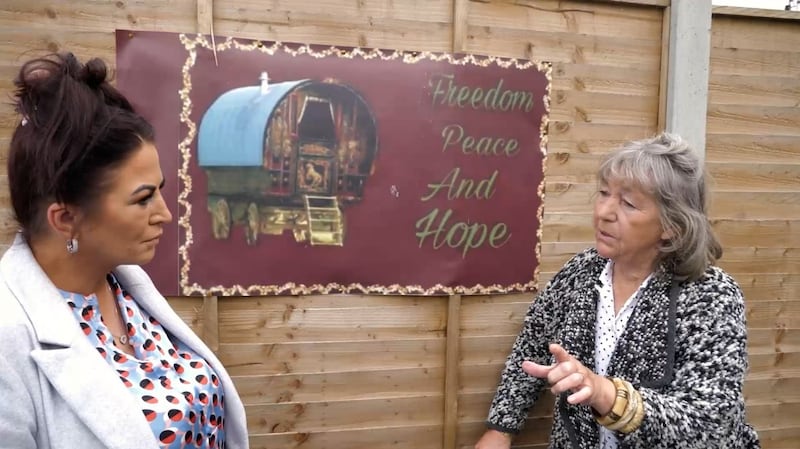
This sentiment was shared we when shot our next film, at the site and home of Chrissy Donoghue Ward in Dublin; a collection of caravans, some dating back to the 1960s, forever on display as a live-in museum. Donoghue Ward is the sister of the late Nan Joyce, who was the first Traveller to run in a local election.
The two sisters were among the first political and human rights activists to arise out of the Traveller community, a feat often unacknowledged.
'Travellers don't really visit each other like they did in the past; when they move into houses, people don't visit the same way. It changed everything'
Donoghue Ward recalls a moment involving her brother from the early days of Traveller activism. “The council tried to remove my brother from his camp, so he moved his trailer across the road. Then some people burned down his trailer to the ground. Instead of giving in to them, my brother decided to build a tent on the same spot.”
Donoghue Ward says that the forced removal of their homes from the camp also stoked up resentment with some locals. “We all decided to move up the road a bit, we just wanted to find a place for shelter. Not long after that, some people started to shoot at the trailers, with several windows being hit.” She says that her trailers are there now for guests to sleep in, something she is proud to offer. She also notes: “Travellers don’t really visit each other like they did in the past; when they move into houses, people don’t visit the same way. It changed everything.”
This Traveller oral-history project aims to record 10 videos to begin with, and with the assistance of the National Museum of Ireland and the Museum of Country Life, we hope to have them archived by the museum so that future generations will be able to draw upon the words passed down by these Traveller elders.
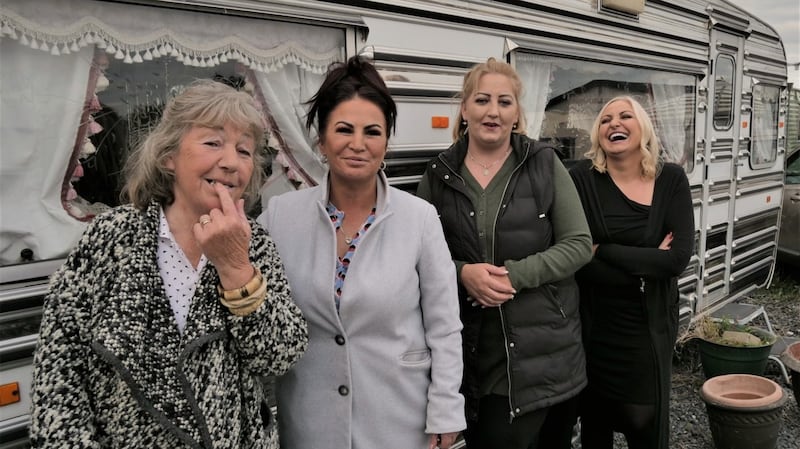
While it is important to archive the stories and oral history of the Traveller community, there is also a need to film videos providing tutorials on horse care, wagon/tent building and tin smithing. These tutorials will also contain practical information, such as how to source the materials to craft buckets, or to canvas a wagon.
We can only hope that these dwindling parts of the Traveller culture will be preserved as the community itself becomes more contemporary. Traveller history is Irish history. It deserves the same level of preservation as other Irish cultural artefacts on display in a museum.





















